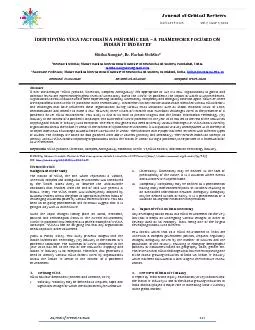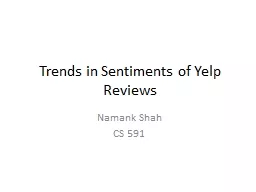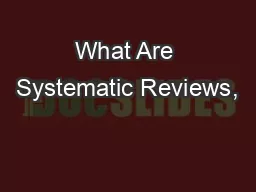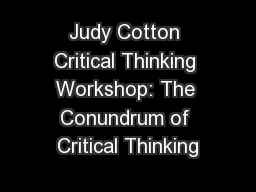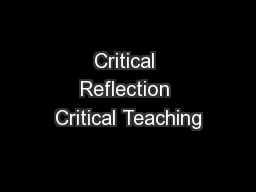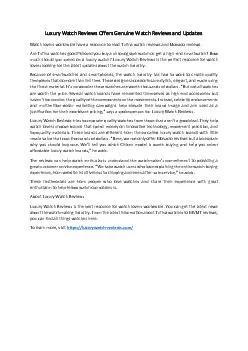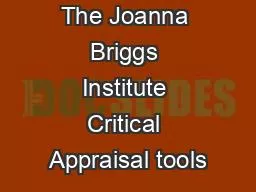PDF-Journal of critical reviews
Author : desha | Published Date : 2021-06-15
931 Journal of Critical Reviews ISSN 2394 5125 Vol 7 Issue 7 2020 IDENTIFYING VUCA FACTORS IN A PANDEMIC ERA A FRAMEWORK FOCUSED ON INDIAN IT INDUSTRY Mitika
Presentation Embed Code
Download Presentation
Download Presentation The PPT/PDF document "Journal of critical reviews" is the property of its rightful owner. Permission is granted to download and print the materials on this website for personal, non-commercial use only, and to display it on your personal computer provided you do not modify the materials and that you retain all copyright notices contained in the materials. By downloading content from our website, you accept the terms of this agreement.
Journal of critical reviews: Transcript
Download Rules Of Document
"Journal of critical reviews"The content belongs to its owner. You may download and print it for personal use, without modification, and keep all copyright notices. By downloading, you agree to these terms.
Related Documents

